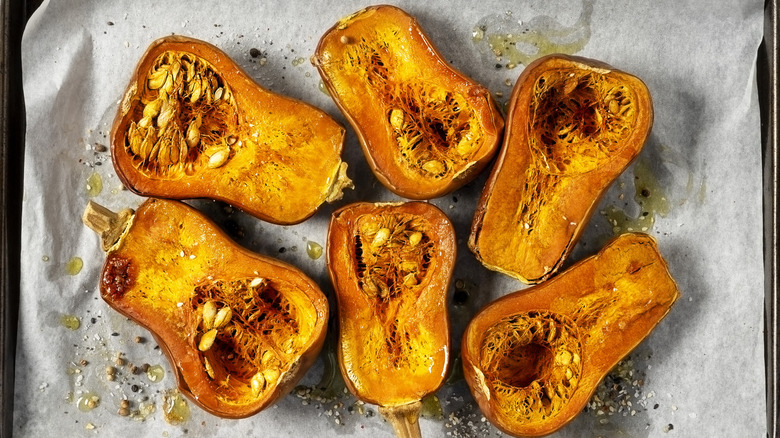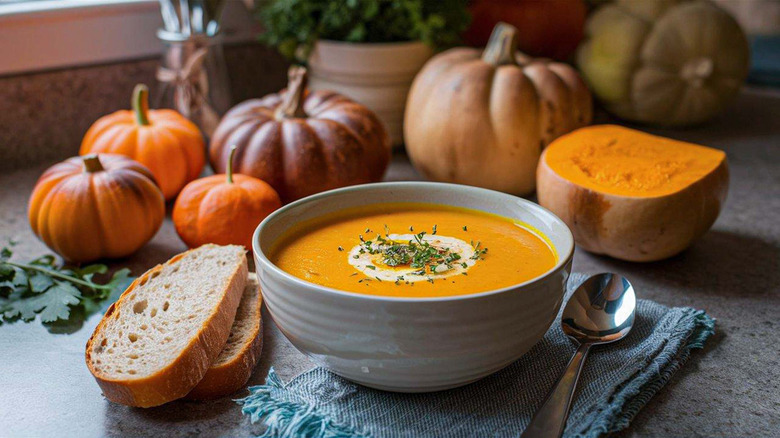Cut Side Up Or Down? Here's How To Cook Butternut Squash In The Oven
We may receive a commission on purchases made from links.
Roasting vegetables perfectly requires a detailed plan, and butternut squash is no different. The best way to roast butternut squash in the oven is to place it cut side down. This method is also one of the fastest ways to prepare the vegetable as it takes very little prep. Cooking it this way allows it to roast, steam, and heat evenly while creating a light caramelization on the surface. When cut side down, the opening in the squash acts as a steam chamber, creating a moist, tender flesh.
Slice the squash in half, and add oil and whatever spices you love to coat the squash halves before placing them on a lightly oiled parchment paper-lined aluminum baking tray. After that, bake them at 400 degrees Fahrenheit for around 40 minutes. To determine if the squash is fully cooked through, check with a fork to see if it's tender, or look for visual cues like caramelized edges. Roasting this method also works for acorn squash (though you can roast acorn squash in the air fryer for the perfect texture as well) and honeynut squash, but the cooking time may depend on the overall size of each specimen.
Ways to use oven roasted butternut squash
Lightly seasoned, roasted squash is delicious on its own, but incorporating it into a seasonal side dish like a winter squash and couscous salad with bite-size cubes of creamy, caramelized flavor is equally tasty. Take advantage of the boat-like shape and make a stuffing with quinoa, kale, a protein of choice, and spices for a complete meal that you can eat right out of the squash. After all, its nutty taste pairs flawlessly with robust veggies and grains. Cook up a mouthwatering butternut squash and sage risotto. The squash provides a velvety consistency and sweet taste, perfect for pairing with a hearty chicken dinner.
Scoop the flesh out post-cooking and puree it using a food processor or high-speed blender before mixing it into various dishes. Try stirring the puree into a butternut squash mac and cheese, which is an easy way to amp up Vitamin A intake while producing a gorgeous orange hue. It also works as a 1:1 replacement in baked goods that call for pureed pumpkin (like chewy pumpkin chocolate chip cookies) for a richer and more complex profile.
Or, blend the puree with cream, stock, and herbs to make a rich butternut squash and sage soup. The sage's savory notes complement the squash's earthiness. Or try one of the best ways to use leftover roasted squash for dinner — this orange, butternut squash, and poppyseed loaf, which packs a citrus kick and nuttiness.


